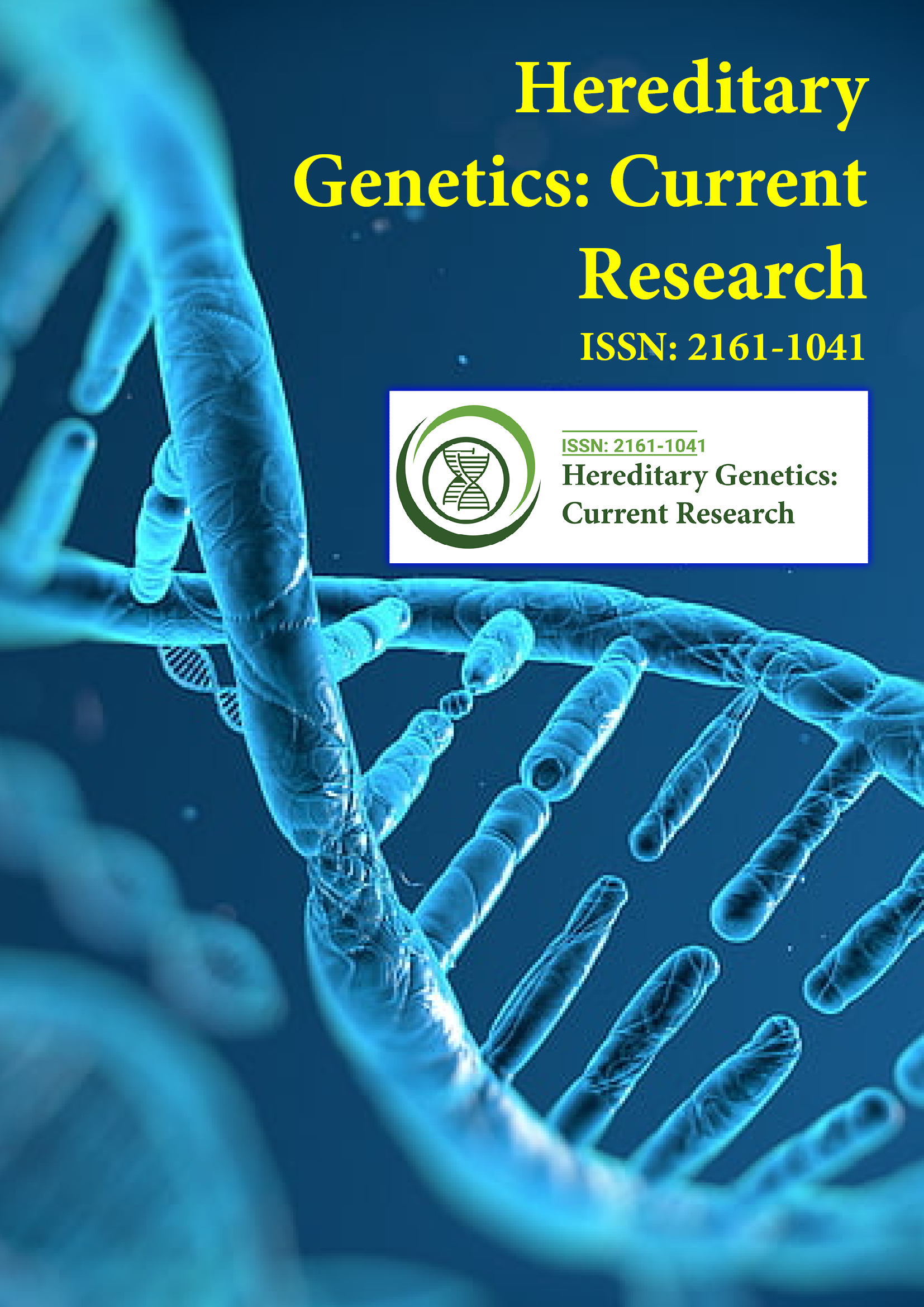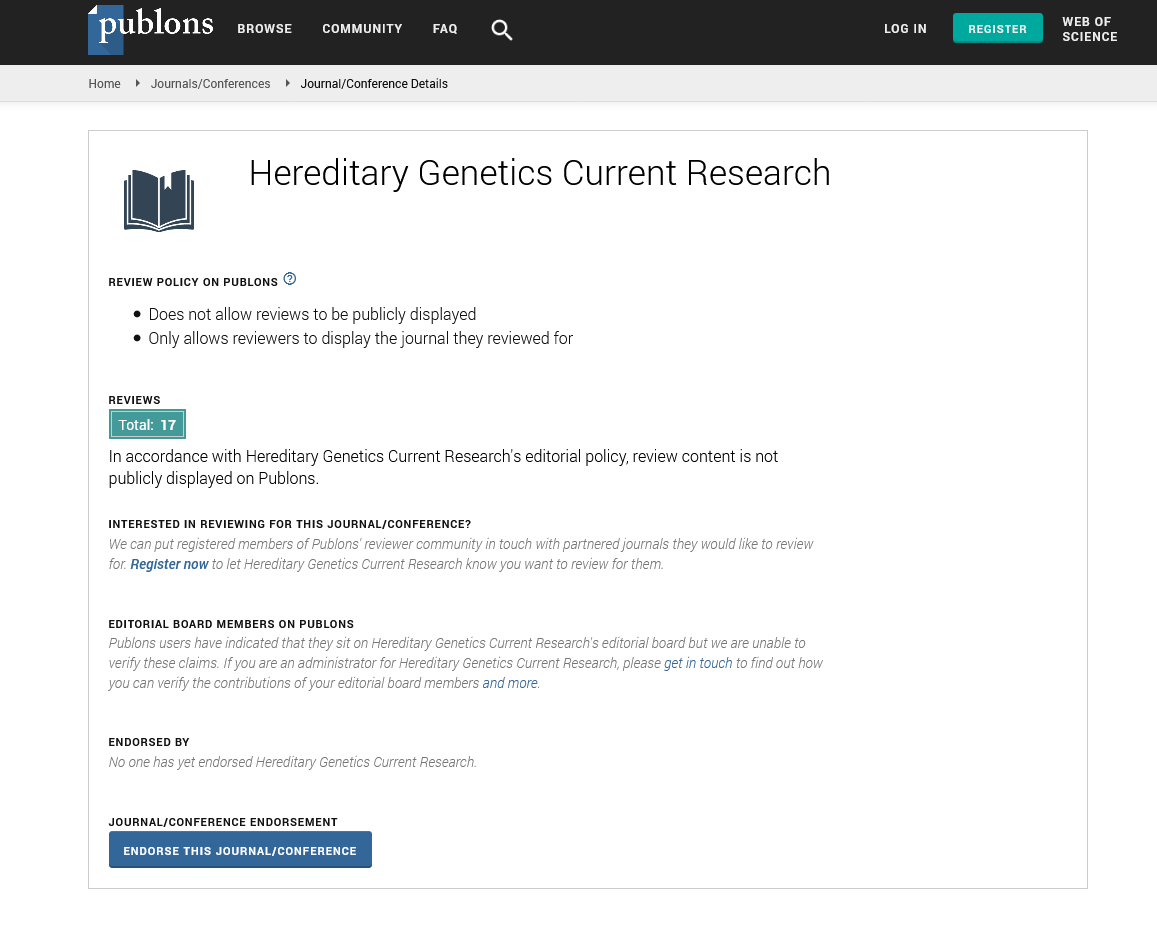PMC/PubMed Indexed Articles
Indexed In
- Open J Gate
- Genamics JournalSeek
- CiteFactor
- RefSeek
- Hamdard University
- EBSCO A-Z
- NSD - Norwegian Centre for Research Data
- OCLC- WorldCat
- Publons
- Geneva Foundation for Medical Education and Research
- Euro Pub
- Google Scholar
Useful Links
Share This Page
Journal Flyer

Open Access Journals
- Agri and Aquaculture
- Biochemistry
- Bioinformatics & Systems Biology
- Business & Management
- Chemistry
- Clinical Sciences
- Engineering
- Food & Nutrition
- General Science
- Genetics & Molecular Biology
- Immunology & Microbiology
- Medical Sciences
- Neuroscience & Psychology
- Nursing & Health Care
- Pharmaceutical Sciences
Opinion Article - (2023) Volume 12, Issue 3
Modern Genetic and Imaging Technologies for Ovarian Cancer Detection and Management
Bernard Coles*Received: 01-Sep-2023, Manuscript No. HGCR-23-23030; Editor assigned: 04-Sep-2023, Pre QC No. HGCR-23-23030 (PQ); Reviewed: 18-Sep-2023, QC No. HGCR-23-23030; Revised: 25-Sep-2023, Manuscript No. HGCR-23-23030 (R); Published: 02-Oct-2023, DOI: 10.35248/2161-1041.23.12.257
Description
Ovarian cancer is a deleterious disease that affects thousands of women worldwide each year. While the majority of ovarian cancers are sporadic, a significant proportion can be attributed to hereditary factors. Hereditary ovarian tumour syndromes are a group of genetic conditions that predispose individuals to an increased risk of developing ovarian tumors. One of the most well-known hereditary ovarian tumour syndromes is associated with mutations in the Breast Cancer gene 1 (BRCA1) and Breast Cancer gene 2 (BRCA2) genes. Women with these mutations have a significantly increased risk of developing both breast and ovarian cancers. BRCA1 mutations are more strongly associated with ovarian cancer than BRCA2 mutations. Lynch syndrome, also known as Hereditary Non-Polyposis Colorectal Cancer (HNPCC), is another hereditary condition linked to ovarian cancer. It is caused by mutations in DNA mismatch repair genes such as MLH1, MSH2, MSH6, and PMS2. While Lynch syndrome is primarily associated with colorectal cancer, women with these mutations are also at an increased risk of developing ovarian cancer. Apart from BRCA mutations and Lynch syndrome, several other hereditary ovarian tumour syndromes exist, albeit with lower prevalence. These include Peutz-Jeghers syndrome, Cowden syndrome, and Li-Fraumeni syndrome.
Understanding the genetic basis of these syndromes is essential for identifying individuals at risk and implementing appropriate surveillance measures. Recent advances in genetic sequencing techniques have allowed for a more in-depth analysis of BRCA1 and BRCA2 mutations. It has been discovered that certain mutations within these genes are associated with a higher risk of ovarian cancer than others. This knowledge is essential for risk assessment and customized cancer prevention strategies.
Emerging evidence suggests that genes involved in DNA repair, cell cycle regulation, and hormonal pathways may also play a role. Identifying these genes and their interactions is essential for a more comprehensive understanding of ovarian tumorigenesis. Transvaginal ultrasound is a commonly used imaging technique for ovarian cancer screening. It allows for the visualization of ovarian masses and the assessment of their characteristics, such as size, shape, and vascularity.
Recent advancements in ultrasound technology, including 3D and Doppler imaging, have improved the accuracy of Transvaginal Ultrasonography (TVUS) in detecting ovarian tumors at an early stage. MRI is a valuable tool for evaluating ovarian masses, especially in cases where TVUS results are inconclusive. It provides detailed information about the morphology and tissue composition of ovarian lesions. Recent developments in MRI, such as diffusion-weighted imaging and dynamic contrast-enhanced imaging, have enhanced its sensitivity and specificity in ovarian cancer diagnosis. CT scans are typically used for staging ovarian cancer and assessing the extent of disease spread. Recent advancements in CT technology, such as multi-detector CT and dual-energy CT, have improved image resolution and reduced radiation exposure. These innovations are particularly beneficial for patients with suspected advanced ovarian cancer. PET imaging with radiotracers like 18F-FDG has shown potential in detecting recurrent ovarian cancer and assessing treatment response. Identifying individuals at risk of hereditary ovarian tumour syndromes is a vital first step in prevention and early detection.
Genetic counseling and testing services have become more widely available, allowing individuals with a family history of ovarian cancer to assess their risk and make informed decisions about surveillance and risk-reduction strategies. For women with a high genetic risk of ovarian cancer, risk-reducing surgeries such as bilateral salpingo-oophorectomy can significantly reduce their risk. Regular surveillance is recommended for women at increased risk of ovarian cancer. Additionally, emerging technologies such as liquid biopsy for Circulating Tumor DNA (ctDNA) analysis hold potential for early cancer detection and monitoring. Advancements in our understanding of the genetics of hereditary ovarian tumour syndromes have approached for targeted therapies. Drugs that specifically target BRCA-mutated ovarian cancers, such as PARP inhibitors, have shown remarkable efficacy. Not all individuals with the same mutation will develop cancer, and the reasons for this variability are still not fully understood. Efforts are needed to ensure that all individuals at risk have access to these essential tools for early detection and risk reduction. As technology continues to advance, new tools and techniques for ovarian cancer detection and management will likely emerge. Artificial Intelligence (AI) and machine learning are being explored to improve the accuracy of image interpretation and assist in risk assessment.
Conclusion
Hereditary ovarian tumour syndromes represent a complex group of genetic conditions that significantly increase the risk of ovarian cancer. Recent developments in genetics and imaging techniques have provided valuable insights into the underlying genetic factors and improved our ability to detect ovarian tumors at an early stage. As our understanding of these syndromes continues to evolve, so too will our strategies for risk assessment, surveillance, and targeted therapies. Ultimately, these advances hold the potential of better outcomes and improved quality of life for individuals at risk of hereditary ovarian cancer.
Citation: Coles B (2023) Modern Genetic and Imaging Technologies for Ovarian Cancer Detection and Management. Hereditary Genet. 12:257.
Copyright: © 2023 Coles B. This is an open-access article distributed under the terms of the Creative Commons Attribution License, which permits unrestricted use, distribution and reproduction in any medium, provided the original author and source are credited.

